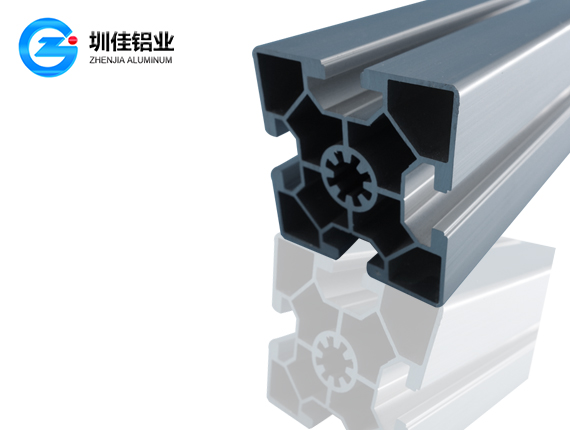The corrosion resistance of industrial aluminum profiles is mainly reflected in the following aspects:
Natural oxide film: aluminum itself has excellent properties, can form a dense oxide film on the surface, effectively block the erosion of air, water oxygen and other corrosive media on aluminum, so as to protect aluminum materials from corrosion
Anodizing treatment: After anodizing and other surface treatment processes, industrial aluminum profiles will form an oxide layer with a thickness between 10-25 microns on the surface, further improving its corrosion resistance
Weather resistance: The surface treatment of industrial aluminum profiles makes it have a certain hardness and wear resistance, which can effectively protect aluminum materials from external erosion and wear, and it is not easy to fade or deformation when exposed to the outdoor environment for a long time

Environmental stability: Compared with other metals, aluminum can also maintain good stability in harsh environments such as hot and humid, acid and alkali. In the atmosphere, seawater, chemical corrosive gas medium extreme environment, industrial aluminum profiles can maintain good corrosion resistance, not easy to be eroded, degraded or fall off
Corrosion resistance test: The corrosion resistance test of aluminum profiles includes salt spray test, which requires that after testing, the surface has no corrosion phenomenon and meets the relevant standards
Influence of alloying elements: The corrosion resistance of different aluminum alloys is different, such as 6063 aluminum alloy because of its good formability and excellent corrosion resistance, widely used in the construction industry
The 2000 series and 7000 series aluminum profiles are heat-treatable alloys due to the addition of Cu, Mg and other elements, although the mechanical properties are excellent, but the processability and corrosion resistance are poor
Film performance: The film performance of aluminum profiles is also an important indicator to measure corrosion resistance, including the thickness of the film layer, uniformity and sealing quality, which collectively affect the corrosion resistance of aluminum profiles



